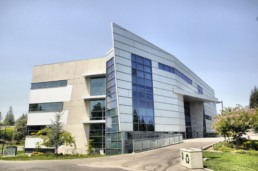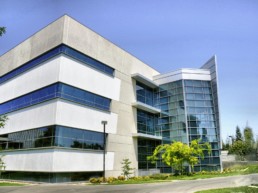
Project Overview
Owner
California State University, Sacramento
Completion Date
2009
Project Cost
$40 Million
Project Size
100,000 SF
3QC Services Included
- Retro-commissioning
- Building Energy Audit
CSU Sacramento, Academic Information & Resource Center
Sacramento, CA
The Academic Information Resource Center (AIRC) building, completed and occupied in 2005, houses the University Computing and Communications Services Department as well as the University Telecommunication Services. The building supports personnel requirements for information technology and equipment, an Interactive Learning Center and several student computer laboratories. Upon occupancy, the building experienced significant air flow cross connections between building systems leading to air balance problems and humidity control problems. This led to excessive energy use. After the University staff spent significant time on the issue to no avail, 3QC performed retro-commissioning services to identify system performance and develop corrective action to solve the excess energy and humidity issues. We completed an energy audit as part of this process. We also developed additional mechanical control sequences to assist the University with energy efficiency and building comfort control, implemented control changes and tested building operation to confirm the success of the corrective measures. The project was completed in June 2009 and was on budget with change orders less than 1.5%. 3QC’s services included:
- Building Systems Audit and Utility bill review
- Review of design criteria, construction documents, and inspection reports
- Development of design recommendations/alternatives & Retro-Cx plan
- Development of Energy Conservation Measures
- Testing and Balancing
- Functional Systems’ Testing and Final audit report
3QC successfully identified cross contamination of air flows that created humidification problems in the data room. The fourth floor of the building, approximately 18,000SF, houses the campus data center and humidity control was the most important concern for the campus. We analyzed the original design intent documents and inspected the installed systems to identify the construction deficiencies which led to the cross contamination of air streams and envelope leakage.
Building pressurization problems prevented the building entry doors from opening and closing correctly, and also prohibited doors opening for severe events. The pressure control problems also contributed to hot/cold/draft complaints from building occupants. 3QC analyzed building operational sequences along with the original design intent and discovered a significant programming error. Correction of this error immediately solved the building pressure issue and subsequently led to the correct measures for temperature control. Our solutions not only corrected the building pressurization, cross flow, and data center humidity problems, but resulted in an 18% reduction in energy usage. Some procedures utilized to commission the system envelope and assemblies included developing checklists to verify quality of installed systems, thermo-graphic analysis of building envelop and interior partitions, and TAB to verify air leakage rates are within acceptable tolerances.


